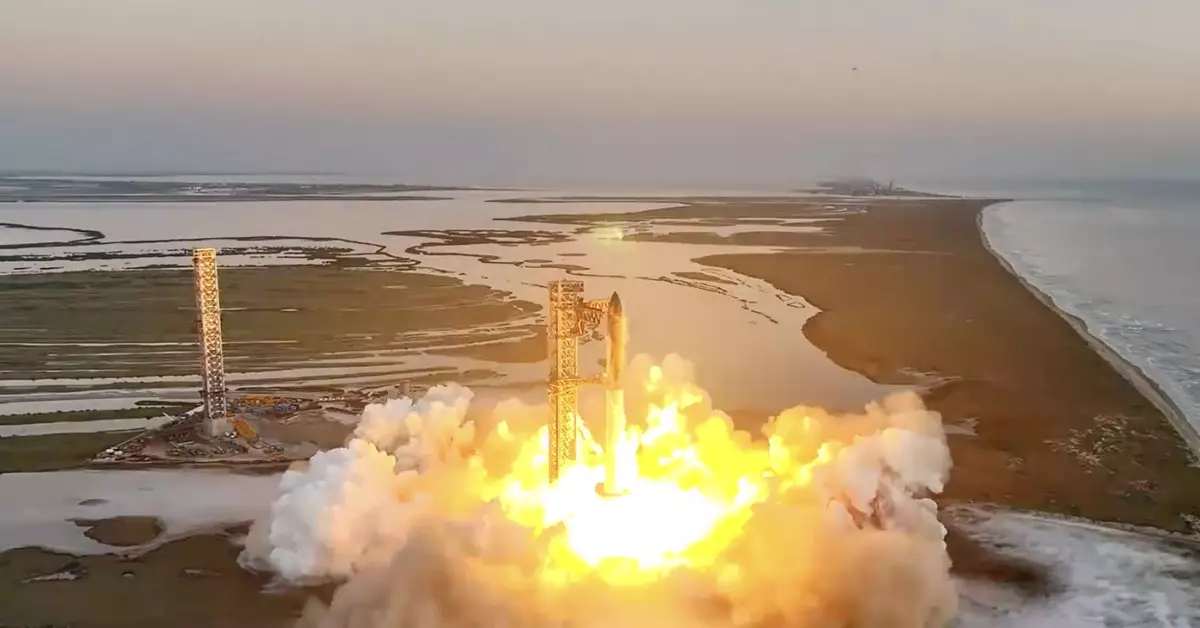On October 12, 2023, SpaceX marked another significant milestone in the realm of aerospace with the launch of its fifth Starship flight test. This mission was particularly noteworthy not only because of the vehicle’s capabilities but also due to the impressive recovery method employed for its Super Heavy booster. Set against the sunlit southern Texas landscape, the launch took place promptly at 8:25 AM ET, showcasing SpaceX’s relentless pursuit of innovation in rocket technology.
One of the standout achievements of this flight was the successful landing of the Super Heavy booster. Previously, the enhancement of booster return methods had been a challenge for SpaceX, which faced various complications in its earlier tests. However, this time, the booster was “caught” by unique arms known as the “chopsticks” on the launch tower, a method that emphasizes the company’s innovative approach to maximizing reusability in space travel. This catch not only demonstrates the advancement of SpaceX’s engineering capabilities but also sets the stage for future missions, illustrating the company’s commitment to ensuring efficient and effective landings.
The flight’s launch sequence underwent slight delays as SpaceX took necessary precautions to clear maritime traffic from the vicinity, highlighting the meticulous nature of their operations. Timing is crucial in aerospace, and the team managed to execute the launch within its designated 30-minute window, a testament to their operational efficiency. The collaboration with regulatory bodies, such as the Federal Aviation Administration, clearly played a critical role in ensuring the timely clearance for this critical test flight.
Another key aspect of this mission is the anticipated return of the Starship spacecraft itself. Planned to splash down in the Indian Ocean, this facet of the test emphasizes the importance of continuous iterations in rocket design. The focus on safe recoveries is not merely about returning hardware but positions SpaceX to refine its technology and improve future iterations. With the FAA’s expedited approval process, it appears that the agency and SpaceX share a mutual ambition to advance the boundaries of current space exploration.
As we look ahead, SpaceX’s developments in launching and recovering its Starship fleet reflect both an ambitious vision and the practical steps toward achieving it. The successful execution of this flight test, particularly the novel booster recovery, epitomizes not just a technical accomplishment but also reinforces SpaceX’s pioneering role in the competitive landscape of space travel. With the pace of advancements, it’s evident that the next generation of flow and functionality in aerospace is steadily on the horizon, paving the way for a bold future in exploration beyond Earth.

